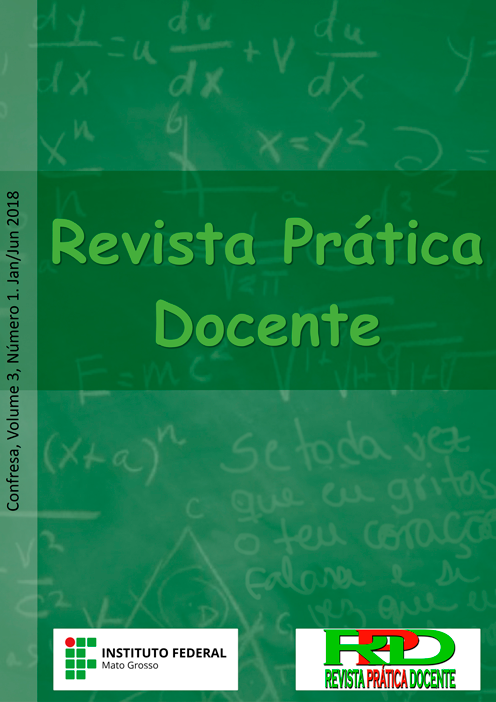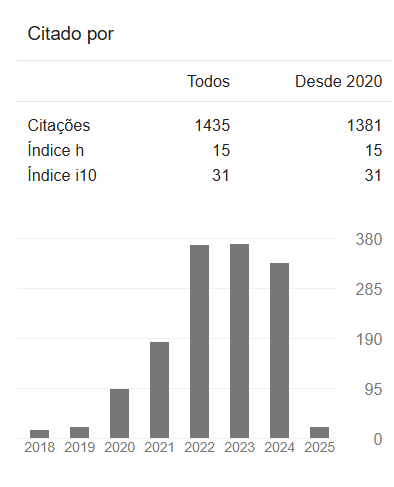OBMEP IN THE PERSPECTIVE OF LEARNING ENVIRONMENTS: A CONTENT ANALYSIS IN THE PERIOD FROM 2005 TO 2017
DOI:
10.23926/RPD.2526-2149.2018.v3.n1.p54-74.id193Keywords:
OBMEP, Learning Environments, Paradigm of Exercise, Scenery to InvestigationAbstract
In this article we aim to investigate the interrelationships between the questions of the Brazilian Mathematical Olympiad of the Public Schools (OBMEP) in the period from 2005 to 2017 with the Learning Environments proposed by Skovsmose (2000). We conduct a qualitative research in the documentary modality. The corpus of the research was constituted by the 260 questions of the OBMEP for Level II (8th and 9th grades) in the period from 2005 to 2017. The data were analyzed through the procedures of Content Analysis from the perspective of Bardin (1977). In our analysis, we seek to map, classify and analyze each of the 260 issues of OBMEP in the light of the theoretical contributions of the learning environments and the critical mathematical education. The results of the research indicated that there is a predominance of OBMEP issues in relation to Environments 1 and 3 – Paradigm of Exercise with reference to Pure Mathematics and semi reality Paradigm of Exercise with reference to Pure Mathematics and semi reality. We conclude that mathematics teachers in service should not develop their pedagogical practices in the classroom simply in Environments 1 and 3 related to the exercise paradigm, as found in the analysis of the issues of OBMEP in the period from 2005 to 2017, but rather move between different Learning Environments.
Downloads
Metrics
References
APPOLINÁRIO, F. Dicionário de metodologia científica: um guia para a produção do conhecimento científico. São Paulo: Atlas, 2009.
BARDIN, Laurence. Análise de conteúdo. Lisboa: Edições 70, 1977.
BORBA, M. C.; PENTEADO, M. G. P. Informática na Educação. Belo Horizonte: Autêntica, 2001.
BRASIL. Parâmetros Curriculares Nacionais: Introdução aos Parâmetros Curriculares Nacionais. Secretaria de Educação Fundamental. Brasília: MEC/SEF, 1997. 126p.
BRASIL. Parâmetros Curriculares Nacionais: Matemática. Secretaria de Educação Fundamental. Brasília: MEC/SEF, 1998. 148p.
CRESWELL, J. W. Projeto de pesquisa: métodos qualitativo, quantitativo e misto. Tradução: Luciana de Oliveira da Rocha. 3. ed. Porto Alegre: Artmed, 2007.
FAUSTINO, A. C.; PASSOS, C. L. B. Cenários para investigação e resolução de problemas: reflexões para possíveis caminhos. Revista Educação e Linguagens, v. 2, p. 62-74, 2013. DOI: https://doi.org/10.33871/22386084.2013.2.3.62-74
FIDELES, E. C. A OBMEP sob uma perspectiva de Resolução de Problemas. 2014. 57f. Dissertação (Mestrado Profissional em Matemática) – Universidade de Brasília, Brasília. 2014. Disponível em: <http://www.repositorio.unb.br/handle/10482/17049>. Acesso em: 10 mar. 2018.
MARTINS, L. B. Um estudo sobre as estratégias de resolução de questões da OBMEP. 2015, 162f. Dissertação (Mestrado em Ensino de Matemática) – Instituto de Matemática, Universidade Federal do Rio Grande do Sul. Porto Alegre. 2015. Disponível em: <http://www.lume.ufrgs.br/handle/10183/131243>. Acesso em: 10 mar. 2018.
PENTEADO, M. G. Possibilidades para a Formação de Professores de Matemática. In: PENTEADO, M. G.; BORBA, M. C. (Org.). A informática em ação: formação de professores, pesquisa e extensão. São Paulo: Olho d’Água, 2000. p. 23-34.
SKOVSMOSE, O. Cenários para investigação. Bolema, Rio Claro, n. 14, p. 66-91, 2000. Disponível em: <http://www.pucrs.br/ciencias/viali/tic_literatura/metodologia/Skovsmose_Cenarios_Invest.pdf> Acesso em: 10 mar. 2018.
SKOVSMOSE, O. Educação Matemática Crítica: a questão da democracia. 2. ed. Campinas: Papirus, 2004.
Downloads
Published
How to Cite
Issue
Section
License
Copyright (c) 2023 A Revista Prática Docente tem o direito de primeira publicação

This work is licensed under a Creative Commons Attribution-NonCommercial 4.0 International License.
Authors who publish in this journal agree to the following terms:
- Authors retain the copyright and grant the journal the right of first publication, with the paper simultaneously licensed under the Licença Creative Commons Attribution allows the sharing of the work with acknowledgment of authorship and initial publication in this journal.
- Authors are authorized to take additional contracts separately, for non-exclusive distribution of the version of the work published in this journal (e.g. publish in institutional repository or as a book chapter), with acknowledgment of authorship and initial publication in this journal.











